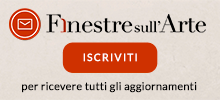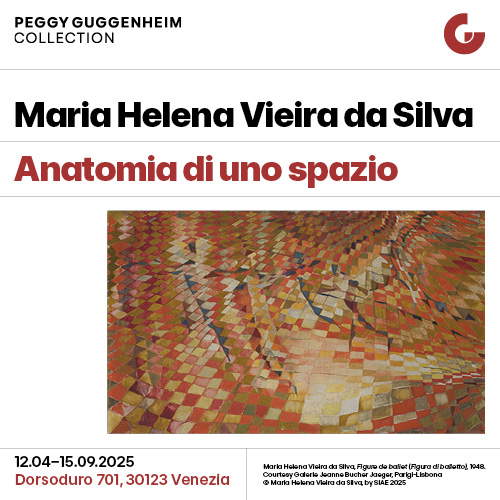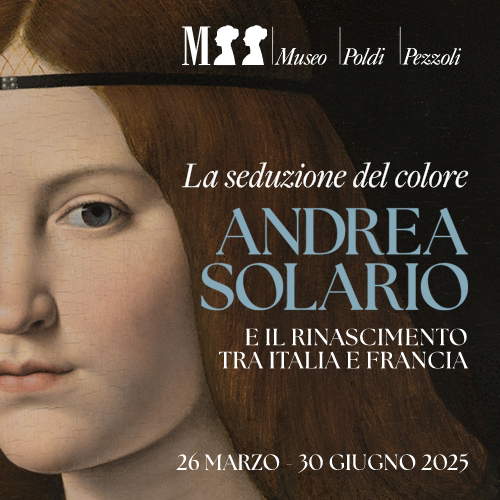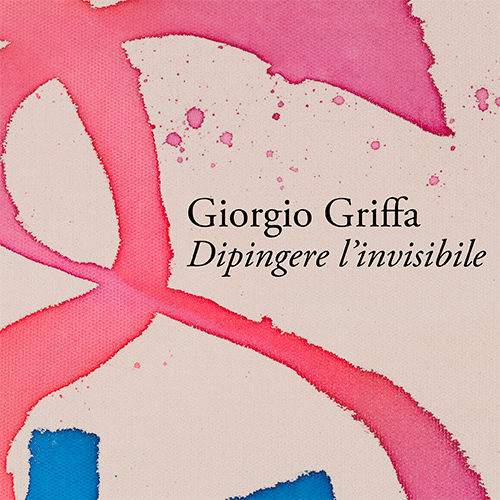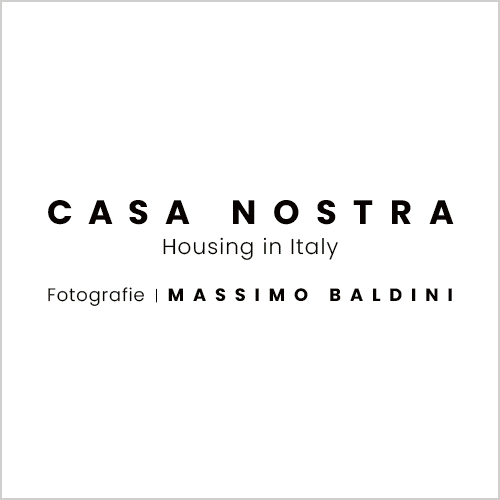Herculaneum, at the Antiquarium on display the woods that survived Vesuvius
From April 10, 2025, the Herculaneum Archaeological Park will open to the public an exhibit that is unparalleled in the world. The Vesuvian site’sAntiquarium houses a selection of furnishings and wooden objects from the ancient Roman city, unique artifacts that the fury of the79 A.D. eruption paradoxically protected. When the more than twenty-meter-high blanket of pyroclastic mud swept over Herculaneum, the absence of oxygen prevented the wood from burning, causing it to carbonize instead.
It is thanks to this process that today it is possible to admire pieces of inestimable historical value, which survived destruction and have been returned to collective memory. The new exhibition marks the return of these wooden artifacts to Herculaneum, after a preview lasting more than a year at the Reggia di Portici, from Dec. 13, 2022 to Dec. 31, 2023. Now, in theAntiquarium, the objects find their place in two rooms specially recreated to evoke the atmosphere of a Roman home. The experimental set-up displays the artifacts and also enhances their original function, allowing visitors to understand the role they played in the daily lives of the ancient Herculaneans. The tour is complemented by a visit to the Boat Pavilion, dedicated to the city’s seafaring activities, and a display of gold, paintings and statues that tell the story of the luxury of Vesuvian residences.
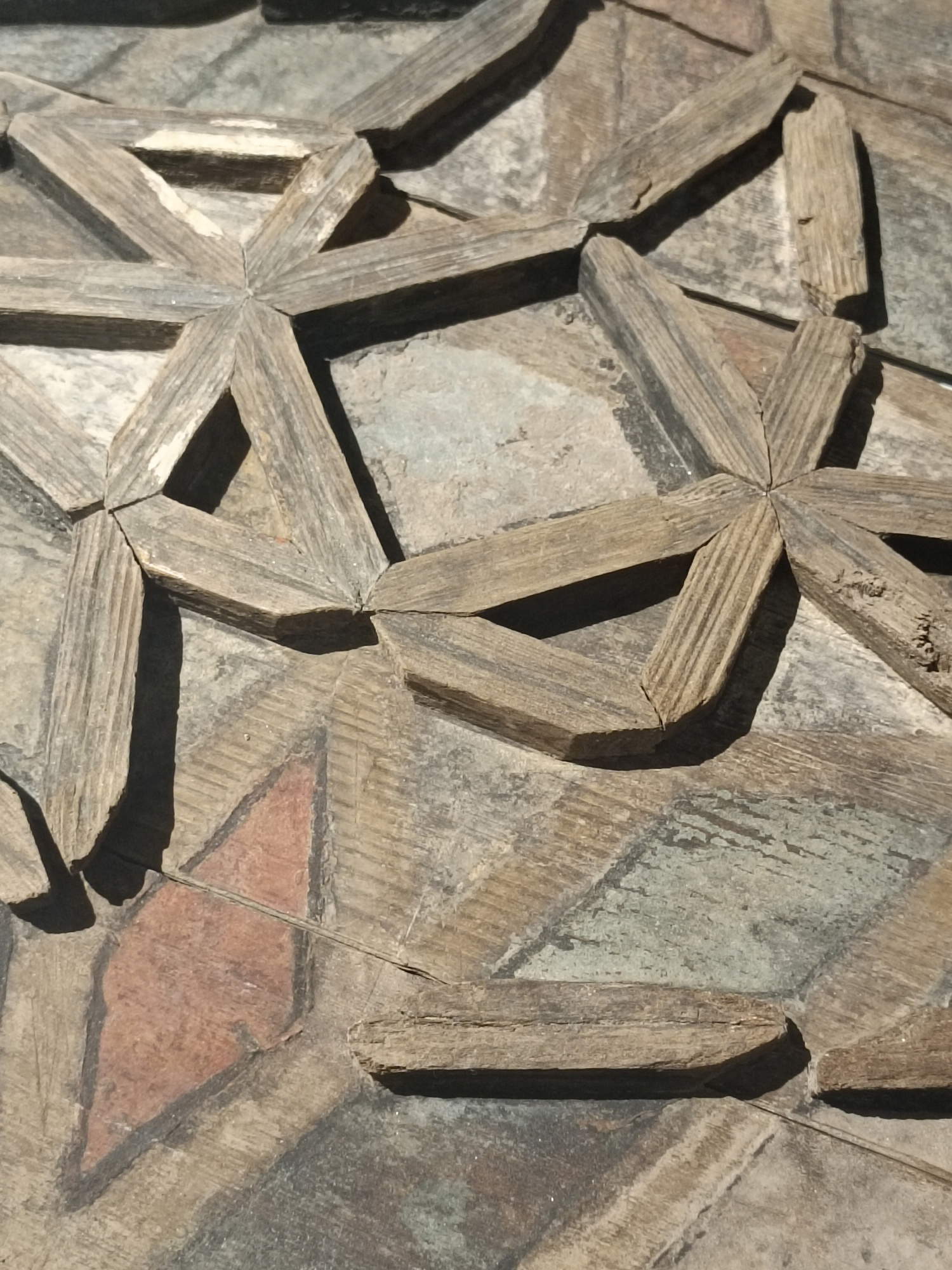
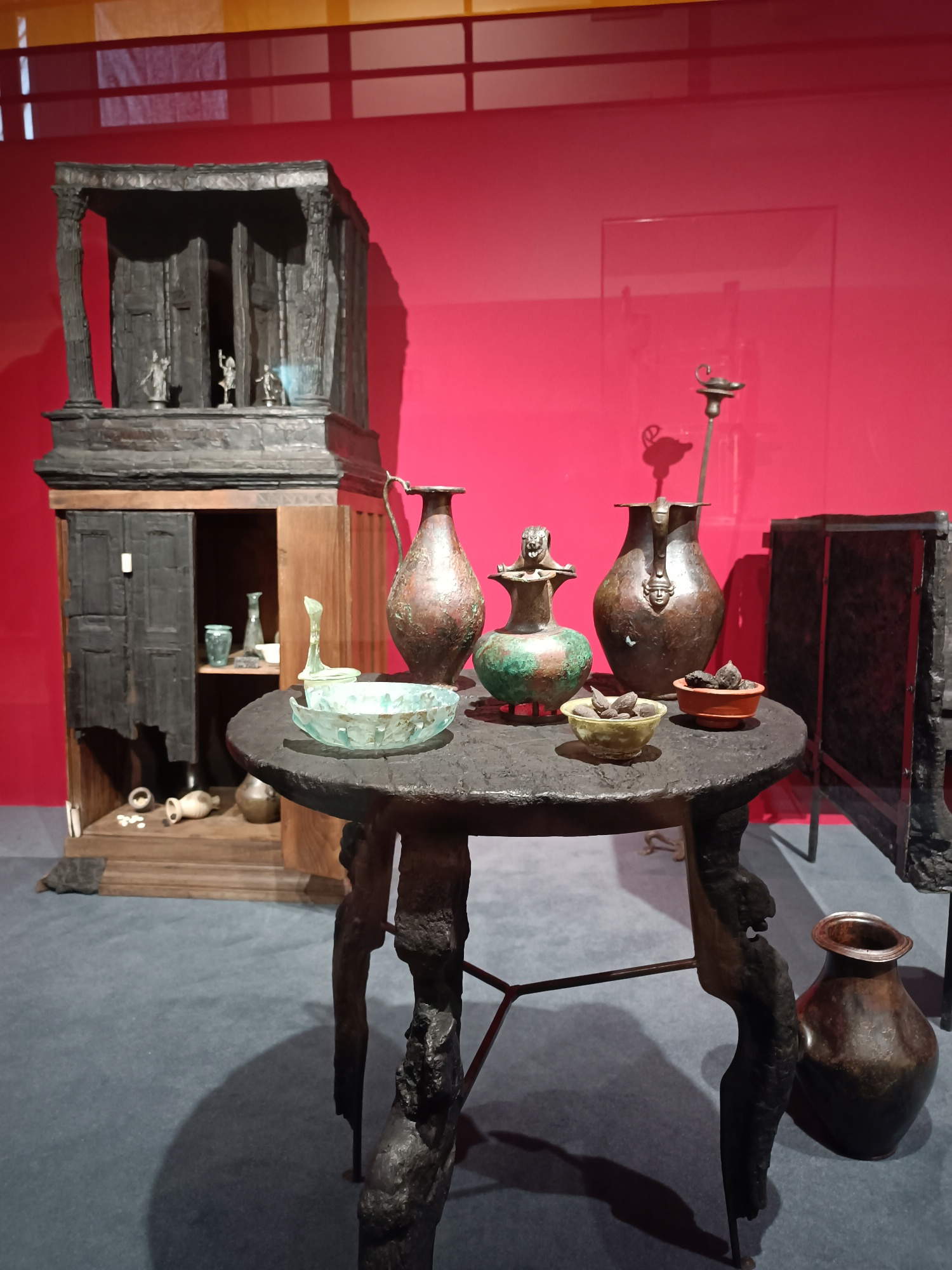
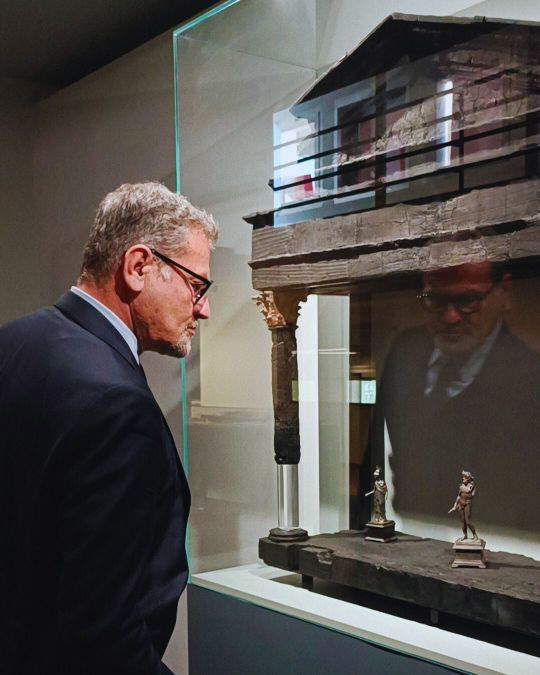
“The Herculaneum Archaeological Park today represents an emblematic model of international collaboration in the field of cultural heritage,” says Museums Director General Massimo Osanna. “The joint work between the Park and the Packard Humanities Institute has made it possible to take significant steps in the protection, enhancement and accessibility of the site, giving it back a new centrality, scientific and cultural. The results achieved demonstrate how public-private cooperation can generate effective and sustainable interventions, capable of combining scientific rigor and design vision. Every advance in Herculaneum is not only a success for archaeological research, but also a concrete contribution to the growth of the community and cultural tourism. The display of charred wooden artifacts provides an extraordinary opportunity to show how the fragility of ancient materials can inspire new solutions for conservation and enhancement. The use of innovative technologies and the joint contribution of specialized expertise have made possible a rigorous and accessible presentation that restores the objects to their original function and meaning. A narrative that, through material traces, continues to restore the voice of the ancient city.”
“After the exhibition at the Reggia di Portici, because of their uniqueness, it was necessary to dedicate an exhibition space to the woods,” says Director Francesco Sirano, “and so today the Antiquarium becomes not only a place of shelter for these charred wooden furnishings, but also a window on a category of archaeological materials that makes Herculaneum unique in the world. The admirably crafted, decorated and even inlaid wood represents not only a true miracle saved from the eruption, but also a red thread that from antiquity still accompanies us in our daily experience. Everything speaks to us at Herculaneum, each find is not just a fragment of the past, but a witness to life lived. Thanks to relentless research and preservation work, today we can offer the public an experience that goes beyond a simple visit: an emotional journey through the objects, architecture and stories of the ancient Herculaneans. We wanted each stage of the visit to the Park to be a moment of discovery and reflection. From the Boat Pavilion, which tells us about the drama of the last moment, to the extraordinary artifacts that reveal daily activities, each find is a piece of a larger narrative that speaks of life, hope and resilience.”
The finds: between archaeology and miracle
Many of the wooden furnishings on display today were recovered thanks to the excavation campaigns conducted by Amedeo Maiuri in the 1920s. It was at that time that the first methods of consolidating charred wood, through the use of kerosene, were developed. But the discoveries did not stop with the last century. New fragments emerged in the first decade of the 21st century, during investigations in the Villa of the Papyri and along the eastern part of the ancient beach. These include remnants of wooden and ivory furniture, as well as polychrome fragments of a roof and a suspended ceiling belonging to the famous marble hall of the House of the Relief of Telefo.
These findings triggered an intensive phase of study and restoration, conducted in collaboration with the Packard Humanities Institute’s international team. Herculaneum’s wooden objects are in fact particularly complex to preserve because of their charred state and a high degree of imbibition. Research has focused not only on the function and production of the artifacts, but also on their long-term preservation, opening new horizons in the scientific literature. The most recent studies, still in progress, have already produced significant advances in the understanding of ancient wooden material and the most suitable treatments to ensure its survival. The extraordinary fragility of the artifacts calls for cutting-edge conservation measures. Any movement poses a potential risk, which is why the entire exhibition is designed to combine accessibility and protection. The exhibition spaces are equipped with a constant microclimate monitoring system that complies with the most up-to-date conservation regulations. The exhibition design, supervised by the ACME04 srl studio, gave priority attention to conservation aspects, in synergy with Tecno-El Tecnologie Elettroniche srl, which provided an active climate control system to ensure stable environmental conditions.
An evocative layout
The museum experience is distinguished by its visual and narrative layout. The colorful backgrounds recall the frescoed walls of the ancient domus, while the specially designed display cases house some of the finest pieces of Herculaneum’s wooden corpus. These include fragments of the Tetto di Telefo, some lararia, cabinets, tables, a bed, a cradle and even the hull of a boat found on the beach. Traditional captions give way to videos with three-dimensional images, offering a more engaging and dynamic narrative.
The exhibition route also represents the culmination of a long and complex enhancement phase. The unique condition of Herculaneum’s wooden artifacts required experimental restoration interventions and collaborations with international research institutions. Each intervention has helped to improve knowledge of the dynamics of material degradation and to refine conservation methods, transforming an archaeological emergency into a living laboratory of innovation and study.
A new direction for the Park
The new arrangement coincides with a significant transition for the governance of the Herculaneum Archaeological Park. Francesco Sirano, who directed the Park from 2017 to 2025, concludes his second term. The Director General of Museums, Professor Massimo Osanna, has announced that he will take over as director of the Park from today, giving an operational delegation to Sirano himself. A continuity that ensures consistency and strategic vision at a time of great ferment for the Vesuvian site, which is increasingly oriented toward a scientific, technological and participatory enhancement of its heritage.
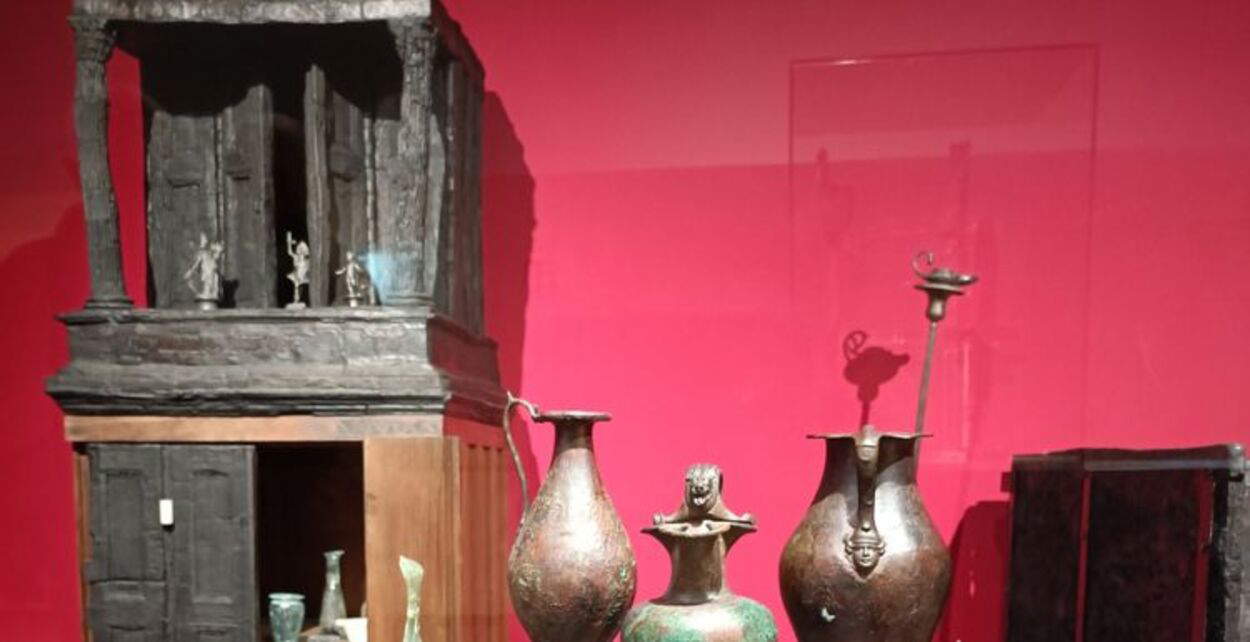 |
| Herculaneum, at the Antiquarium on display the woods that survived Vesuvius |
Warning: the translation into English of the original Italian article was created using automatic tools. We undertake to review all articles, but we do not guarantee the total absence of inaccuracies in the translation due to the program. You can find the original by clicking on the ITA button. If you find any mistake,please contact us.
